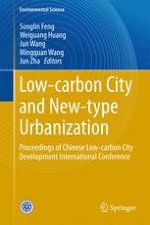2015 | OriginalPaper | Buchkapitel
Comparison of Both Old and New Versions of the Evaluation Standard for Green Building in China with LEED in American
verfasst von : Jing-jing Wang, Yu-rong Zhang, Yuan-feng Wang
Erschienen in: Low-carbon City and New-type Urbanization
Verlag: Springer Berlin Heidelberg
Aktivieren Sie unsere intelligente Suche, um passende Fachinhalte oder Patente zu finden.
Wählen Sie Textabschnitte aus um mit Künstlicher Intelligenz passenden Patente zu finden. powered by
Markieren Sie Textabschnitte, um KI-gestützt weitere passende Inhalte zu finden. powered by
